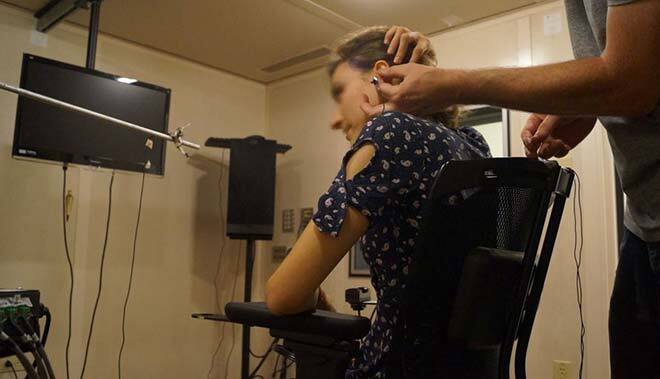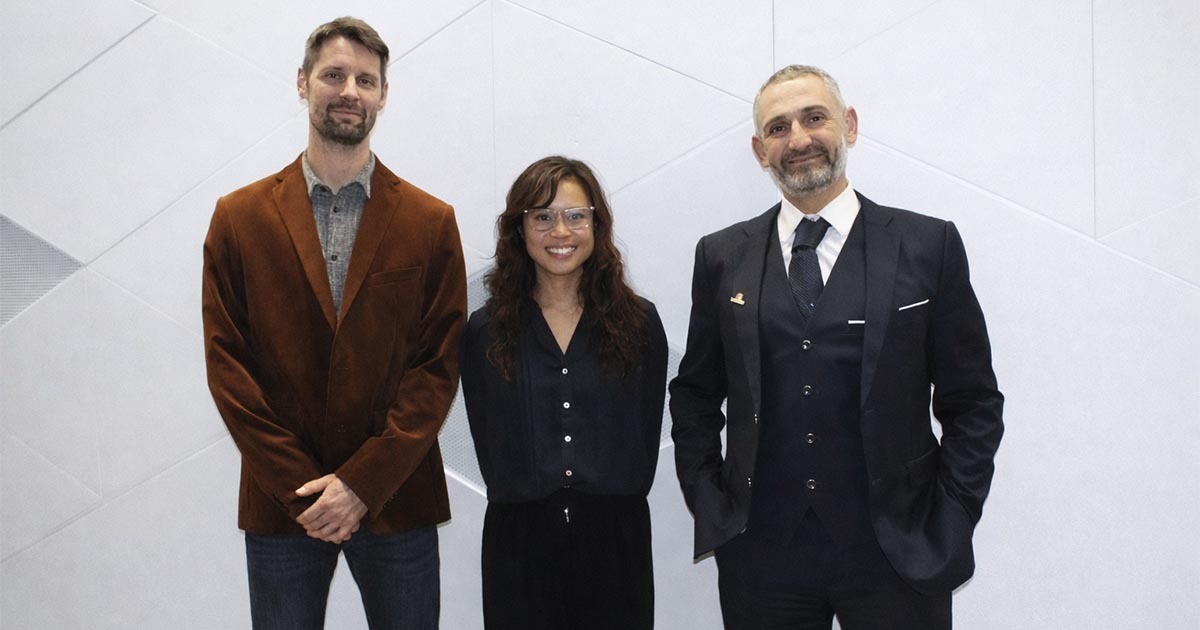How to measure the effect that makes our voice sound hollow?

Pexels. Royalty-free image.
The occlusion effect occurs when the ears are occluded by hearing protectors. This effect is often described as an amplified and distorted perception of physiological sounds, such as our own voice, which may be perceived as deeper and hollow. Unfortunately, this source of discomfort can cause workers to misuse or even remove their protectors. At present, there is no standardized measurement methodology or occlusion effect indicator that can be used by occupational hygienists to provide training on hearing protector fit designed to minimize these discomforts. Based on a laboratory measurement campaign with volunteers, this paper presents a methodology for objectively measuring the occlusion effect using miniature microphones adapted to the field. Keywords: Occlusion effect, sound discomfort, hearing protection devices.
Hearing Protection Devices and the Occlusion Effect
Occupational hearing loss is the most common illness in Québec and the most costly for Québec society. To reduce the risk of hearing loss, workers exposed to high noise levels must be protected. Often, the last line of defence against noise is using hearing protection devices (HPD). However, these can cause discomfort, such as the occlusion effect—typically described as an amplified and distorted perception of physiological sounds such as speech, chewing or heartbeat. Because of the occlusion effect, voices can sound low, hollow, muffled, or like talking into a barrel. If you read this text while plugging your ears with your fingertips, you will notice these changes. When the discomfort caused by the occlusion effect becomes too great, some people may try to alleviate it by improperly using or even removing their HPDs. As a result, their effectiveness is significantly reduced, increasing the risk of exposure to hazardous noise levels that can lead to occupational hearing loss.
One strategy to alleviate this problem is to provide occupational hygienists with occlusion measurement tools so they can train noise-exposed workers on the proper method of inserting HPDs to ensure a reduction in both occlusion effect and environmental noise. Unfortunately, unlike commercial systems for assessing the in situ noise reduction provided by HPDs [1], there are no tools available to make such type of measurement for the occlusion effect. Therefore, it must first be quantified.
In addition to its associated discomfort, the occlusion effect results in an increased sound pressure in the earcanal occluded by the HPD. Miniature microphones placed in the canal can therefore be used as measuring instruments. Although this technique is simple and practical, to date, there is no standard or consensus in the literature on the objective measurement methodology for this purpose. This raises the following questions: (i) how could the occlusion effect be measured with microphones? (ii) could the amplitude of the measured sound pressure signals predict the level of experienced discomfort? In this study, the first question is addressed by proposing a methodology for an objective measurement of the occlusion effect that is robust and suitable for use in the workplace.

Figure 1: Test bench in the audiometric booth of the ÉTS ICAR laboratory. In this picture, the researcher installs a microphone device in the participant’s ear to measure internal and external sound pressure levels when the occlusion effect is generated with her own voice or with a bone-conduction vibrator placed on the skull.
Experimental Analysis of the Occlusion Effect on Volunteers
Thirty volunteers with normal hearing participated in measurements conducted at the ICAR laboratory audiometric booth at ÉTS, following an experimental protocol validated by the ÉTS ethics committee (certificate H20180402). During the measurements, several types of excitation and measuring methods of sound pressure levels were compared. Participants were asked to produce specific excitations themselves by saying random numbers, vocalizing sounds (e.g., the “i” vowel) or chewing gum. External excitation was also produced by a bone-conduction vibrator—a vibrating electromechanical transducer placed on the skull—which generates vibrations transmitted to the ear by conduction through skull bones and soft tissues. Sound pressure inside and outside the ear, with and without an earplug, was measured using microphone earpieces developed at ÉTS [2, 3]. Finally, several simple indicators were compared—some based on an average of the occlusion effect over a range of frequencies and others based on its value at a specific frequency (e.g. 250 Hz).

Figure 2: Earpieces with miniature microphones measuring sound pressure levels inside and outside the earcanal [2, 3]. (a) “Protected” earpiece with a plug that generates an occlusion effect. (b) “Open” earpiece that allows measurements in the earcanal without generating an occlusion effect.
Main Results and Industrial Benefits
Analyzing different measurement configurations made it possible to select a robust methodology based on the sound pressure level measurements on each side of the earplug (inside and outside the earcanal) while a person generated the occlusion effect using their own voice. In addition to its excellent repeatability and suitability for the field due to its ease of use, this method allowed quick calculations of an occlusion effect indicator in each ear from a single measurement. From a practical point of view, such an approach integrated into a training tool would allow workers to get direct feedback on the occlusion effect measured in each ear and to adjust the positioning of the HPDs to minimize the effect. In addition, the selected method could be used by manufacturers in the development and testing phases of new HPDs with reduced occlusion effect.
The next step in the project is a laboratory study to (i) better understand the factors that influence the discomfort associated with the occlusion effect—earplug insertion depth, type of earplug, surrounding noise levels, and (ii) determine an objective indicator—obtained through the microphone measurement method chosen here—that can be correlated with the experienced discomfort. With this tool, manufacturers will be able to develop new, more comfortable HPDs, and occupational hygienists will be able to improve the training offered for optimal HPD positioning.
Additional Information
For more information on this research, please see the following paper: Saint-Gaudens, H., Nélisse, H., Sgard, F., & Doutres, O. (2022). Towards a practical methodology for assessment of the objective occlusion effect induced by earplugs. The Journal of the Acoustical Society of America, 151 (6), 4086-4100.



